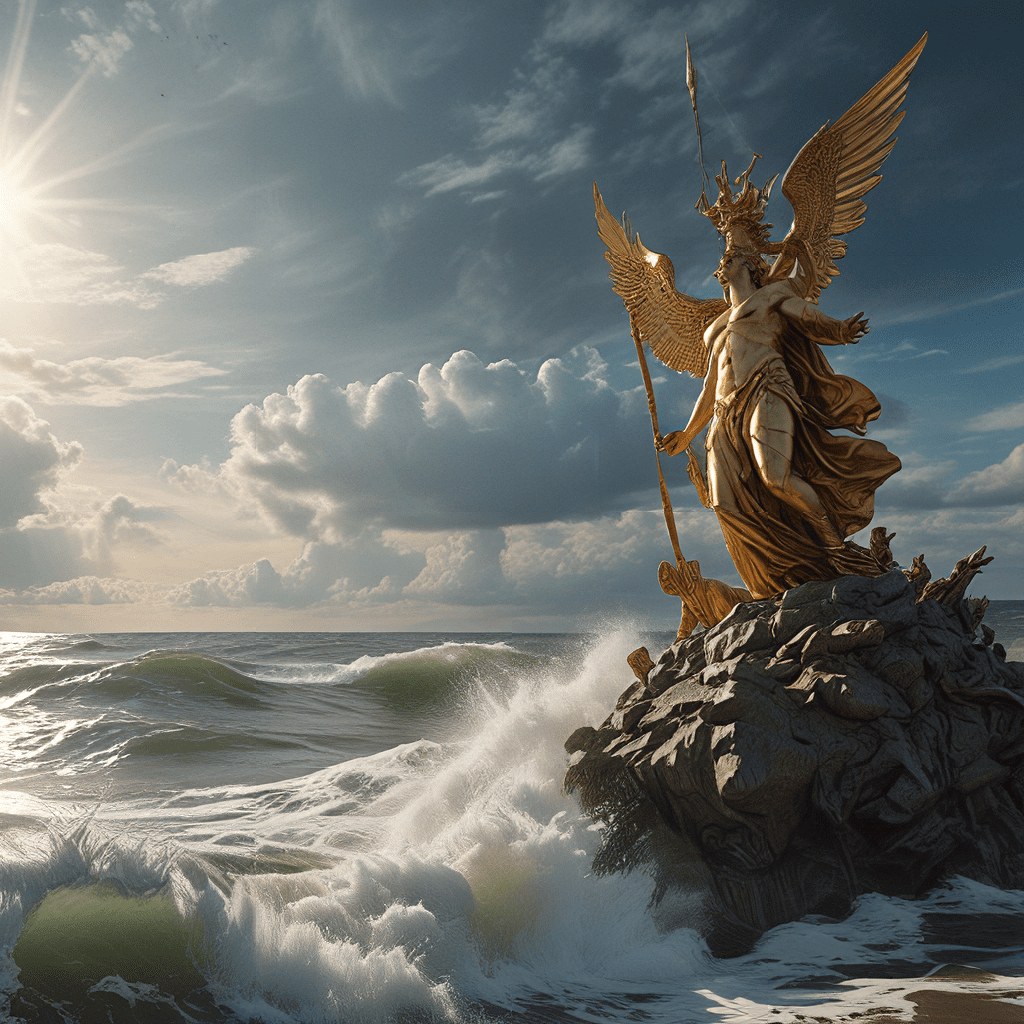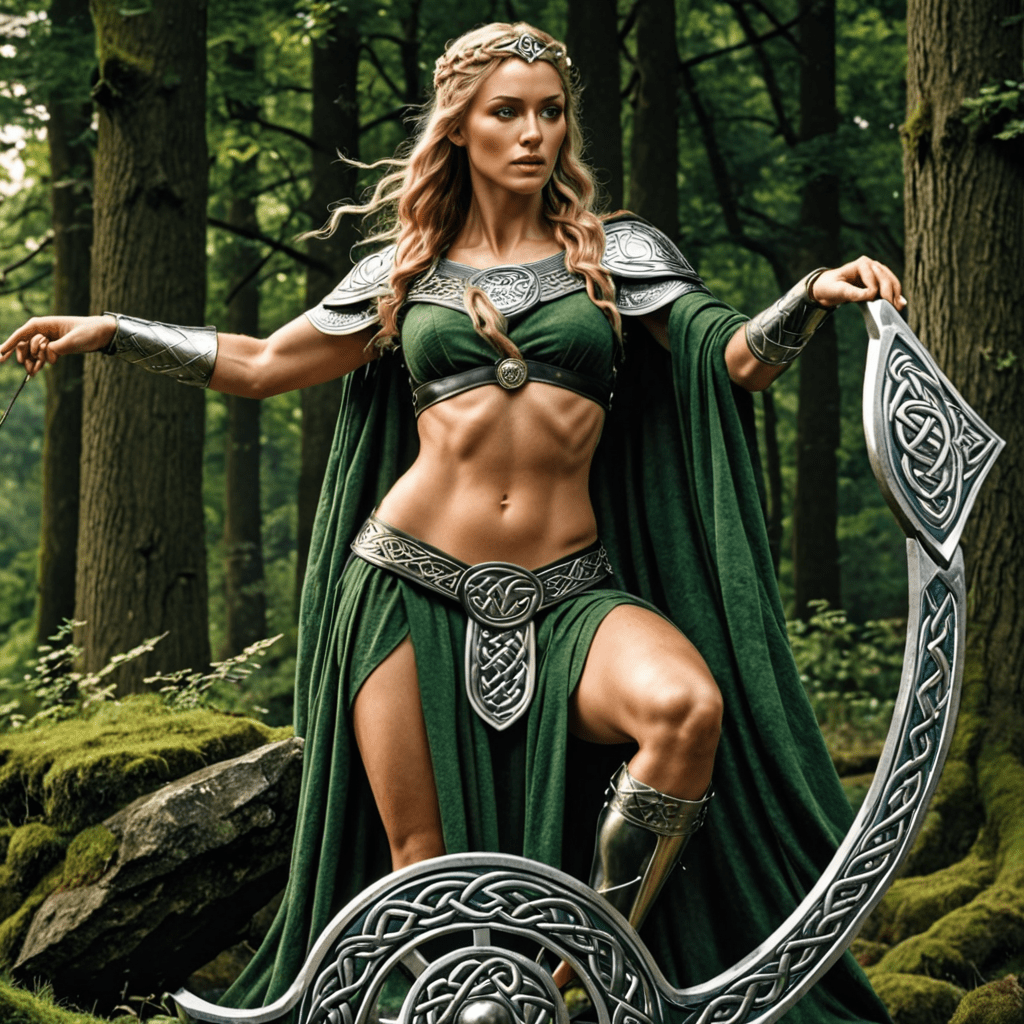Baltic Mythology: Origins and Influences
Baltic mythology is a rich tapestry of stories and beliefs that have been passed down through generations of people living in the Baltic region, which includes Latvia, Lithuania, and Estonia. The roots of this mythology can be traced back to the ancient Indo-European culture, with influences from other neighboring cultures such as Slavic, Germanic, and Finnic traditions. The Baltic people believed that the world was filled with gods, goddesses, and spirits who played a significant role in shaping their lives. These divine beings governed the forces of nature, the fate of individuals, and the well-being of communities.
The mythology was primarily oral in nature, passed down through generations through songs, poems, and folktales. With the advent of Christianity in the Baltic region, many of these traditional beliefs and stories began to fade into obscurity. However, thanks to the efforts of scholars and folklorists who collected and documented these tales, the essence of Baltic mythology has been preserved for future generations.
The Sky Gods: Perkūnas, the Thunderer
Perkūnas, also known as Perkunas, is arguably the most powerful and well-known god in Baltic mythology. He is the god of thunder, lightning, and storms, and his name is derived from the Baltic word perkūnas, meaning "thunder." Perkūnas is often depicted as a fierce warrior, wielding a hammer or an axe, symbolizing his power and strength. He is responsible for controlling the weather, especially storms, and he is feared and respected for his ability to unleash his wrath upon those who displease him.
Perkūnas is associated with oak trees, which were considered sacred to him. These trees often served as places of worship, and their branches were used to create ritual objects and amulets. Perkūnas is also connected to the sky, which he is believed to rule over, and he is often depicted with a crown of stars or a halo of thunderbolts. He is a powerful force of nature, but he is also a protector of his people, a defender against evil and a bringer of justice.
The Earth Goddess: Žemyna, the Provider
In the world of Baltic mythology, Žemyna, also known as Žemė, is the earth goddess, embodying the fertile soil and the bounty of nature. Her name comes from the Baltic word žemė, which means "earth." Žemyna is responsible for the growth of crops, the flourishing of forests, and the well-being of all living beings. She is often depicted as a motherly figure, nurturing and benevolent, symbolizing her role as the provider for all life on Earth.
As the mother goddess, Žemyna is deeply connected to the cycle of life, death, and rebirth. She embodies the fertility of the land, and her blessings are sought for good harvests and abundant crops. She is also associated with the concepts of home, family, and community, reflecting the central role of agriculture and kinship in Baltic societies. She is a symbol of stability, abundance, and the enduring power of the earth.
The Sea God: Jūras, the Ruler of the Depths
Jūras, also known as Jūra, is the god of the sea in Baltic mythology. He embodies the vastness and power of the ocean, reigning over its depths and controlling its tides. Jūras is a mysterious and somewhat fearsome figure, representing both the beauty and dangers of the sea. Sailors would often pray to him for safe passage and favorable winds, recognizing his power and seeking his protection.
Jūras is often depicted with a trident, a symbol of his authority and his ability to control the sea. He is also associated with the creatures that live in the ocean, including fish, whales, and sea monsters. Jūras is a complex figure, embodying both the life-giving and destructive forces of the sea.
The Divine Family: Relationships and Hierarchies
In Baltic mythology, the gods and goddesses are not isolated figures, but rather they form a complex family structure with intertwined relationships. The head of this divine family is usually considered to be Dievas, the supreme god, although his role and importance vary depending on the specific region and tradition. Dievas is often associated with the sky, light, and order, representing the ultimate source of power and authority.
There are other gods and goddesses who hold significant positions within this family, including the sun god Saulė, the moon goddess Mėnuo, the morning star god Aušrinė, and the evening star goddess Vakarinė. These deities are often interconnected, reflecting the interconnectedness of the natural world. The relationship between the gods is not always harmonious, as they often compete for power and influence, leading to conflict and tension.
Baltic Mythology: Rituals and Festivals
Baltic mythology was deeply intertwined with the lives of the people, influencing their daily practices and shaping their understanding of the world. Rituals and festivals played a central role in their worship, providing opportunities to honor the gods and seek their blessings.
These rituals often involved offerings of food, animals, or precious objects, intended to appease the gods and gain their favor. Festivals were celebrated throughout the year, marking significant events in the agricultural cycle, such as the planting and harvesting of crops. These occasions were times for community gatherings, feasting, and entertainment, and they provided opportunities to reinforce the beliefs and values of the Baltic people.
These rituals and festivals served both practical and symbolic purposes. They helped to maintain order within the community, ensure the fertility of the land, and provide protection against evil forces. More importantly, they helped to strengthen the connection between the people and their gods, reminding them of the power and influence of the divine in their lives.
The Importance of Nature in Baltic Mythology
Baltic mythology is deeply rooted in nature, and the gods and goddesses are inextricably linked to the elements that shape the world. The forests, fields, rivers, and seas are not just physical landscapes, but also sacred spaces where the divine presence is felt. The Baltic people recognized the power and influence of these natural forces and honored them through their beliefs and rituals.
The sky, with its sun, moon, and stars, was seen as the realm of the gods, and they controlled the weather, bringing rain, sunshine, and storms. The earth, with its fertile soil and abundant resources, was the domain of the goddess Žemyna, who provided nourishment for all living beings. The sea, with its vastness and mystery, was ruled by Jūras, a powerful god who controlled the tides and the creatures that lived within its depths. These natural forces were not just objects of worship, but also the source of life, inspiration, and guidance for the Baltic people.
The ancient Balts lived in harmony with nature, recognizing their dependence on it for survival. They appreciated the beauty and power of the natural world, and they understood the interconnectedness of all living things. This respect for nature is reflected in their mythology, where the gods and goddesses are not separate from the world but rather an integral part of it.
The Role of Animals in Baltic Mythology
Animals play a significant role in Baltic mythology, often serving as symbols of specific deities or representing important aspects of nature. They are not simply creatures of the wild, but rather possess unique powers, intelligence, and even the ability to communicate with humans.
The wolf, for instance, is often associated with Perkūnas, the god of thunder, and is seen as a fierce and powerful animal. The bear is a symbol of strength and wisdom, sometimes representing the earth goddess Žemyna. The snake is a creature of mystery and transformation, representing the cycle of life and death in nature. These animals embody specific qualities and characteristics that were important to the Baltic people, reflecting their understanding of the natural world.
The Baltic people also believed that certain animals had the ability to act as messengers or guides between humans and the gods. For example, the owl is often associated with wisdom and knowledge, and it is believed to be able to communicate with the spirits of the dead. The fox is a cunning and clever animal, symbolizing trickery and mischief, and it is sometimes associated with the god of death.
These beliefs highlight the importance of animals in the lives of the Baltic people. They were not just seen as creatures of the wild but also as symbols of divine power, messengers of the gods, and even potential allies in the human world.
Theories on the Origins of Baltic Mythology
The origins of Baltic mythology are shrouded in mystery, but scholars have developed several theories to explain its development and evolution. One common theory suggests that Baltic mythology originated from a shared Indo-European ancestor, with similarities to other Indo-European mythologies such as Greek, Roman, and Slavic traditions.
This theory is supported by the presence of shared themes, characters, and motifs in these mythologies, suggesting a common origin. However, Baltic mythology also contains elements that are unique to the region, reflecting influences from other cultures such as Finnic and Germanic traditions.
Another theory suggests that Baltic mythology developed through the observation of the natural world and the search for explanations for natural phenomena. The Baltic people observed the movements of the sun and moon, the changes of seasons, and the power of storms, and they sought to understand these forces through the creation of myths and legends.
The creation of gods and goddesses who embody these natural forces provided a way to explain and control the world around them. This approach suggests that Baltic mythology was a way to make sense of the world and to find meaning in the natural order.
The Legacy of Baltic Mythology in Modern Culture
Baltic mythology continues to exert a strong influence on modern culture, even though many of its traditional beliefs and practices have faded away. The myths and legends of the Baltic people are preserved in their literature, folklore, and art, and they inspire contemporary artists, writers, and musicians to explore themes of nature, the divine, and the human condition.
For example, the name of the Latvian capital, Riga, is derived from the Baltic word for "river." The Estonian national epic, "Kalevipoeg," is a story about a mythical hero who embodies strength and courage and represents the Estonian national identity. The Lithuanian language is still rich in words and phrases rooted in Baltic mythology, reflecting the enduring influence of these ancient traditions.
Baltic mythology provides a rich tapestry of stories and beliefs that offer insights into the worldview of the ancient Baltic people. Although many of its traditional practices are no longer practiced, the mythology continues to inspire and inform modern culture, reminding us of the enduring power of myths and legends.
FAQ
Q: What are some of the most important deities in Baltic mythology?
A: Some of the most important deities in Baltic mythology include Perkūnas (thunder god), Žemyna (earth goddess), Jūras (sea god), Saulė (sun god), Mėnuo (moon god), Aušrinė (morning star god), and Vakarinė (evening star god).
Q: What is the significance of the oak tree in Baltic mythology?
**A: **The oak tree is considered sacred to Perkūnas, the god of thunder, and it often serves as a place of worship. Its branches are used to create ritual objects and amulets.
Q: What are some examples of Baltic mythology in modern culture?
A: Examples include the names of cities like Riga, the Estonian national epic "Kalevipoeg," and the influence of Baltic mythology in modern Latvian, Lithuanian, and Estonian literature and art.
Q: Is Baltic mythology still practiced today?
A: While the traditional practices of Baltic mythology have largely faded away, elements of it are still evident in modern culture, including folklore, art, literature, and language.




